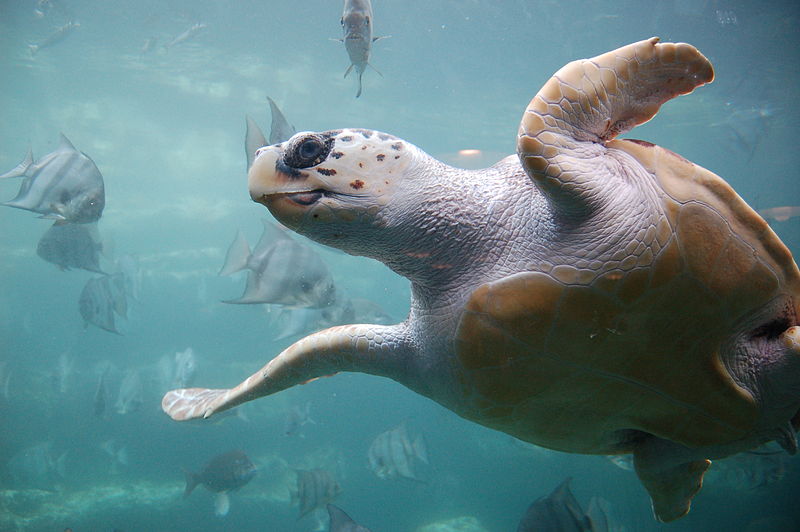Science News
Sea Turtle Studies
May 12, 2011

New studies released last month define threats to sea turtles and a novel way to protect them.
One, published in the journal Environmental Toxicology and Chemistry, looked at the health of 19 loggerhead turtles near Cape Canaveral. Scientists gave these turtles complete check-ups (including blood tests) in 2006 and 2007 and tagged them with satellite transmitters. Half of the turtles migrated north (as far as New Jersey!); half stayed near Cape Canaveral. According to the New York Times, the researchers found
the animals had measurable blood levels of 67 different chemicals used in pesticides and other industrial products. The loggerheads that migrated had higher levels than those that stayed near Florida, confirming prior research that found more pollutants in turtles in northern latitudes.
Despite the large number of chemicals, the animals appear healthy. But the researchers admit that sea turtle health is hard to measure.
(The Academy’s own Wallace “J” Nichols and his colleagues published a study in March on the effect of plastic pollution on sea turtles. You can read more here.)
Another study, published in PLoS One, looked at the history of the oceanic cycle and the health of sea turtles in Japan and Florida. Again, using loggerheads as a barometer, this study looked at the nesting success of the animals. ScienceNow reports:
Together, the past and recent oceanic conditions explained about two-thirds—and as much as 88%—of loggerhead nesting activity.
The authors warn that while causes of nesting successes and failures may seem natural, human-influenced climate change contributes to these ocean cycles.
Finally, two Florida scientists were trying to figure out how to attach satellite tracking tags to teeny turtle hatchlings. The first two months is make-or-break time in the turtles’ lifecycle. To protect these animals, it’s important to understand the hazards they face during this time. Inspired by a good manicure (and really, who isn’t?), the scientists developed a method to adhere the tag so it will last two months and not harm or alter the turtle’s shell. Success! You can read more at Nature News.
Image: ukanda/Wikimedia